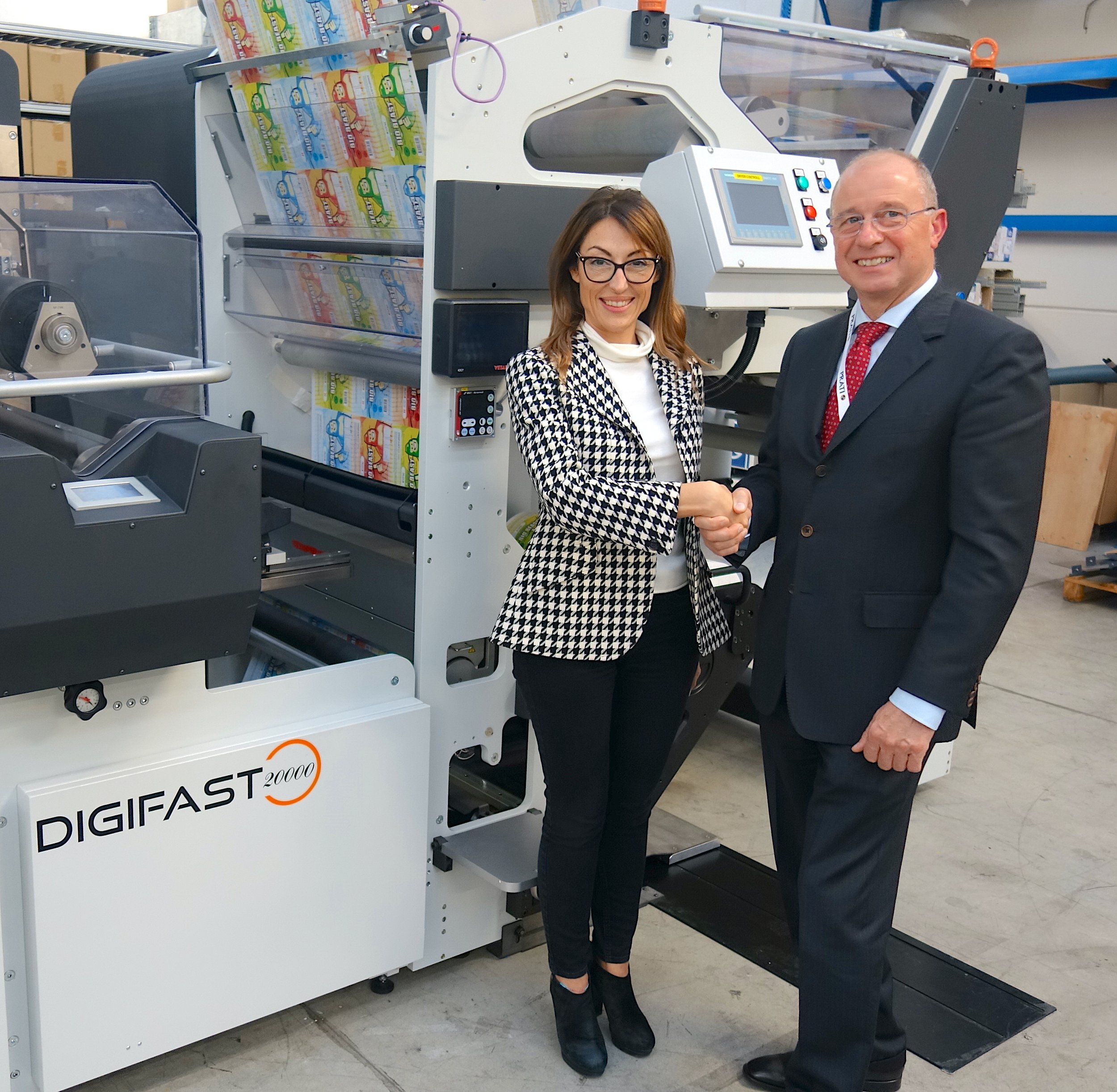Prati aligns its surface treatment requirements with Vetaphone technology
Chiara Prati and Giuseppe Rossi shake hands on an agreement to supply Vetaphone corona technology to Prati’s new DIGIFAST20000 line
Since its inception in 1973 by Pietro Prati, the Italian manufacturer of converting and finishing technology has always held true to the belief that quality breeds success. Today, almost 50 years later, the company is acknowledged worldwide as one of the leading manufacturers in the narrow and mid web sectors of the market, with an annual output of more than 200 machines valued in excess of €20m. Its modern high-tech headquarters in Faenza boasts a string of ISO certifications and its products are manufactured in accordance with CE, UL/CSA, and Industry 4.0 standards.
So, what makes Prati so special? According to Sales & Marketing Director Chiara Prati: “It’s our eye for detail. At every stage from R&D to delivery and commissioning we maintain a high level of quality control that gives reliability to our products and success to our customers.” The proof of this can be found in the company’s global network of sales and support, which since 2018 has included a facility in Dallas Texas, to serve converters in the US and Canadian markets. Today, 80% of Prati’s business comes from exports outside Italy, with around 45% to Europe and 35% to RoW.
Much of its success is based on what it calls its ‘Futura’ technology – a scalable architecture for all converting and finishing applications that allows a customer to grow his or her Prati machine inline with changing business requirements. As Prati’s product range developed from high-speed slitter/rewinders to more complex inspection and finishing lines, the need to include ancillary technology from external suppliers became evident. The choice of these manufacturers was crucial to the company maintaining its reputation for quality, according to Chiara Prati.
“We first encountered Vetaphone when we were working on a special laminating line for one of the World’s largest manufacturers of tube laminates. It was 450mm wide and required a 4KW corona system for secure over-printing on a difficult substrate. We soon came to realise why Vetaphone was the most popular brand on the market – when you invent something you have more experience than anyone else – and it matters!” she explained.
Since that time the two companies have worked closely together on a number of special projects as well as Vetaphone corona units becoming the standard fit for Prati’s successful DIGIFASTone and DIGI COMPACT converting lines. Currently, the two companies are working on a special 630mm project in Spain that will handle linerless labels but needs the facility to spot-coat hotmelt adhesive. “We enjoy working with Vetaphone because our company philosophy aligns with theirs – we both like a challenge and using our expertise to find the best solution,” she added.
The cooperative partnership is a good fit for both. Prati’s requirements are for web widths from 370mm to 760mm, a sector in which Vetaphone has a large share of the corona treatment market, and for substrates that include PSL, PET, monofoils, multi-laminate and alufoil, amongst others – all substrates for which surface treatment was invented and over the years has been progressively developed and refined by the Danish manufacturer. Applications for this combined technology include industries from food and beverage to security and logistics as well as a range of industrial products.
Currently, work is progressing on Prati’s new DIGIFAST20000 model that’s being developed for the HP 20000 and 25000 lines. This 760mm wide machine will need a 4KW corona system from Vetaphone, and global sales projections are ambitious. Looking ahead, Giuseppe Rossi, Vetaphone’s Sales Manager for Italy commented: “We are delighted to be working closely with Prati on a number of exciting new products that will be hot prospects for the market. I think both companies appreciate each other’s attention to detail and the investment made in R&D. This can only bode well for the future.”
With plastic packaging coming under increasing pressure from environmentalists, Prati is aware of its responsibilities towards a ‘green footprint’. According to Chiara Prati: “We believe every action represents our commitment to sustainable development and confirms our sensitivity to the environment. Our technology is designed to meet this commitment, our offices are required to minimise impact and the conduct of our people reflects the ecological approach that are the basis of our corporate ethics.”

